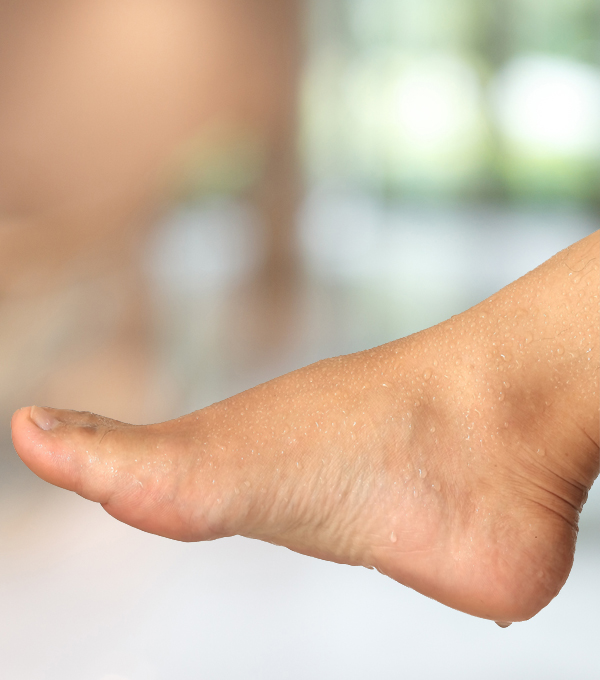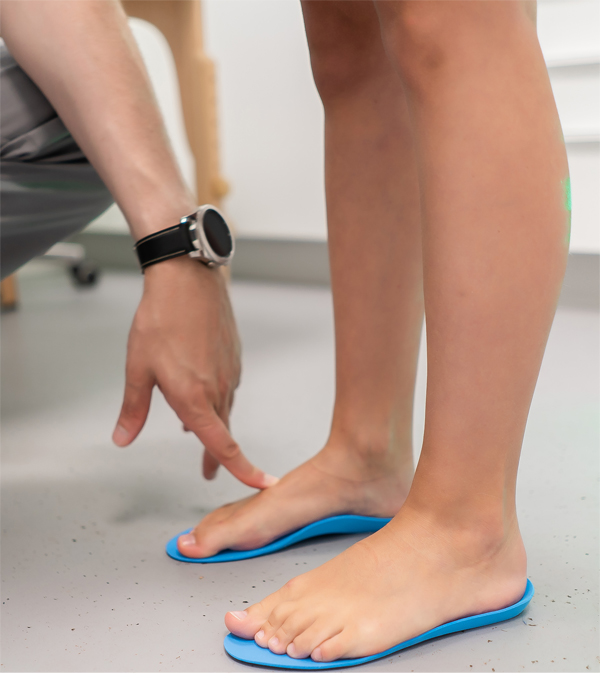Podiatric advices
How do I treat an ingrown toenail?

Treatment of an ingrown toenail depends on the severity of the condition. Here are some general to treat an ingrown toenail:
- Soak your foot: Fill a basin with warm water and add Epsom salt if you like. if desired. Soak your foot in this solution for 15 to 20 minutes, twice a day. This helps reduce inflammation and soften the skin.
- Pain relief: If you experience pain, you can take over-the-counter analgesics, such as ibuprofen, to relieve discomfort. over-the-counter analgesics, such as ibuprofen, to relieve discomfort. Always follow and consult a health-care professional if pain persists or worsens. or worsens.
- Avoid cutting the corners of ingrown toenails, as this can aggravate the situation. Let and try to cut them straight to avoid digging them deeper into the skin.
- If pain persists, the ingrown toenail worsens or there are signs of infection, it's best to consult your podiatrist at the St-Hubert Podiatric Clinic. We'll assess the situation, provide appropriate care and, if necessary, proceed with partial nail removal or other specialized treatments.
How to treat excessive foot perspiration?

Excessive sweating of the feet, also known as plantar hyperhidrosis, can be embarrassing and lead to problems can be embarrassing and lead to problems such as unpleasant odours and fungal infections. Here are some steps you can take to treat excessive foot perspiration:
- Foot hygiene: Maintain good foot hygiene by washing your feet regularly with lukewarm water and mild soap. warm water and mild soap. Be sure to dry your feet thoroughly, especially between the toes, to avoid dampness that encourages the growth of bacteria.
- Use talcum powder or absorbent powder: After washing and drying your feet, apply absorbent powder or talcum powder on the soles of your feet to help reduce moisture and prevent unpleasant odours.
- Change your shoes and socks regularly: Wear breathable shoes made from natural materials such as leather or cotton. Avoid synthetic footwear, which trap heat and moisture. Change your socks every day, and opt for cotton socks cotton socks, which absorb moisture better.
When should I consult with my child?
It is recommended to consult a podiatrist with your child in the following situations:

- If your child complains of foot or ankle pain that persists for several days or weeks, it's important to consult a podiatrist. days or weeks, it's important to consult a podiatrist. The pain may be caused by a variety of foot conditions, and a podiatrist will be able to diagnose the problem and recommend appropriate treatment.
- Problems with walking or posture: If you notice that your child is having difficulty posture problems, a podiatrist can assess his or her foot and gait for structural or biomechanical gait to detect any structural or biomechanical problems.
- Foot deformities: If your child has foot deformities, such as claw or hammer toes, flat or hollow feet claw or hammer toes, flat or hollow feet, a podiatrist may recommend foot orthotics or other interventions to correct the problem. foot orthotics or other interventions to correct the problem.
- In the case of foot or ankle injuries, such as sprains or fractures, a podiatrist can provide appropriate care to promote healing and prevent possible complications.
- If your child wears ill-fitting shoes or shoes that do not properly support his or her feet, a podiatrist can advise you on the appropriate type of shoe to use. a podiatrist can advise you on the appropriate type of shoes to use to avoid future avoid future problems.
It's always best to consult a healthcare professional, such as a podiatrist, to evaluate and treat your child's specific foot problems. They can provide specialized advice and appropriate care to ensure the health and well-being of your child's feet.
How is athlete's foot treated?

Athlete's foot, also known as tinea pedis, is a common fungal infection that generally affects the spaces between the toes and the soles of the feet. Here's how to treat athlete's foot effectively:
- Keep feet clean and dry: Wash your feet daily with lukewarm water and a mild soap. soap. Be sure to dry them thoroughly, especially between the toes, as dampness the spread of infection.
- Apply antifungal powders or sprays to your feet, following the product instructions. instructions. This can help eliminate fungus and prevent recurrence of infection.
- Change socks regularly and wear cotton socks, which absorb moisture better. moisture. Change them every day, or more often if necessary.
- Avoid walking barefoot in changing rooms, public swimming pools, showers and other places where fungi can spread easily.
- Wear well-ventilated leather or canvas shoes that allow your feet to breathe and stay dry. and stay dry.
- An over-the-counter antifungal cream can be applied to the affected area to treat the the infection. Follow the instructions on the product and continue to apply it for the recommended even if symptoms disappear, to ensure complete elimination of the fungi. fungi.
If symptoms of athlete's foot persist despite the use of over-the-counter treatments, it's important to consult a healthcare professional, such as a dermatologist or podiatrist. They can prescribe stronger antifungal medications if necessary and give you personalized personalized advice to prevent recurrence.
